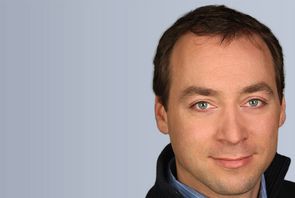Mobile mapping systems for the creation of digital twins
A range of state-of-the-art measurement systems enable the exploration and implementation of innovative solutions in the field of digital twins.

Digital twins virtually reproduce what happens (often invisibly) in reality. They thus replace models and prototypes, enable comprehensive use of data and provide information about properties or behaviour of the "real" twin. In order for the digital twin to correspond as closely as possible to reality, it is necessary to capture the existing environment from different angles, because a single sensor system, such as on the roof of a vehicle, can only capture its environment from its specific perspective. This results in blind spots and blind angles. In order to close these gaps, the DIGITAL experts work with a combination of vehicle-based (set-up on the car), air-based (drone) and person-based (backpack) mobile mapping methods to map the real in the digital world.

The Riegl VMX-2HA is the latest generation of the vehicle-based mobile mapping system from the Austrian company RIEGL Laser Measurement Systems GmbH. It is used on a measurement vehicle to measure road space with millimetre precision. Two laser scanners record 3.6 million measuring points per second. 7 cameras and a panorama camera can scan 114 megapixels.

The survey drone surveys environments highly efficiently from the air. With a dead weight of 11 kg and a carrying capacity of 7 kg, it can carry a laser scanner, an optical camera and also a thermal camera. It can cover 2 km² per flight and only lands for battery replacement.

If digital twins need to be created of areas that cannot be reached or viewed by vehicle or drone, terrestrial 3D laser scanners are used. Here, for example, a staircase is measured with high precision by the laser scanner taking overlapping images at several points, which are then merged into one overall image in the Digital Twin Lab.

The Viametris MS-96 is a modular, mobile laser scanning system for indoor and outdoor surveys that can be deployed in a backpack, or vehicle configuration. It consists of a panoramic camera combined with two LiDARs capable of capturing up to 960,000 points/sec. A GNSS receiver with a powerful IMU also enables the implementation of SLAM procedures.
Data acquisition is offered as a service to customers and cooperation partners. Some strategically important areas such as high priority road sections and railroad networks have already been recorded and can be delivered by us immediately.
The analysis of the data is done with semi-automatic methods and and help of AI-based software such as:
- Riegl RiProcess, RiScanPro, RiAquire
- Bentley ORBIT GT, Microstation, Context Capture
- Autodesk AutoCAD, Revit und Civil3D
- Certanty3D TopoDot
- Mathworks Roadrunner
- Pointfuse Pro
- Laserdata LIS Pro 3D Tools
- TrianGraphics Trian3DBuilder
The FFG is the central national funding organisation and strengthens Austria's innovative power. The infrastructure was funded by the FFG.
